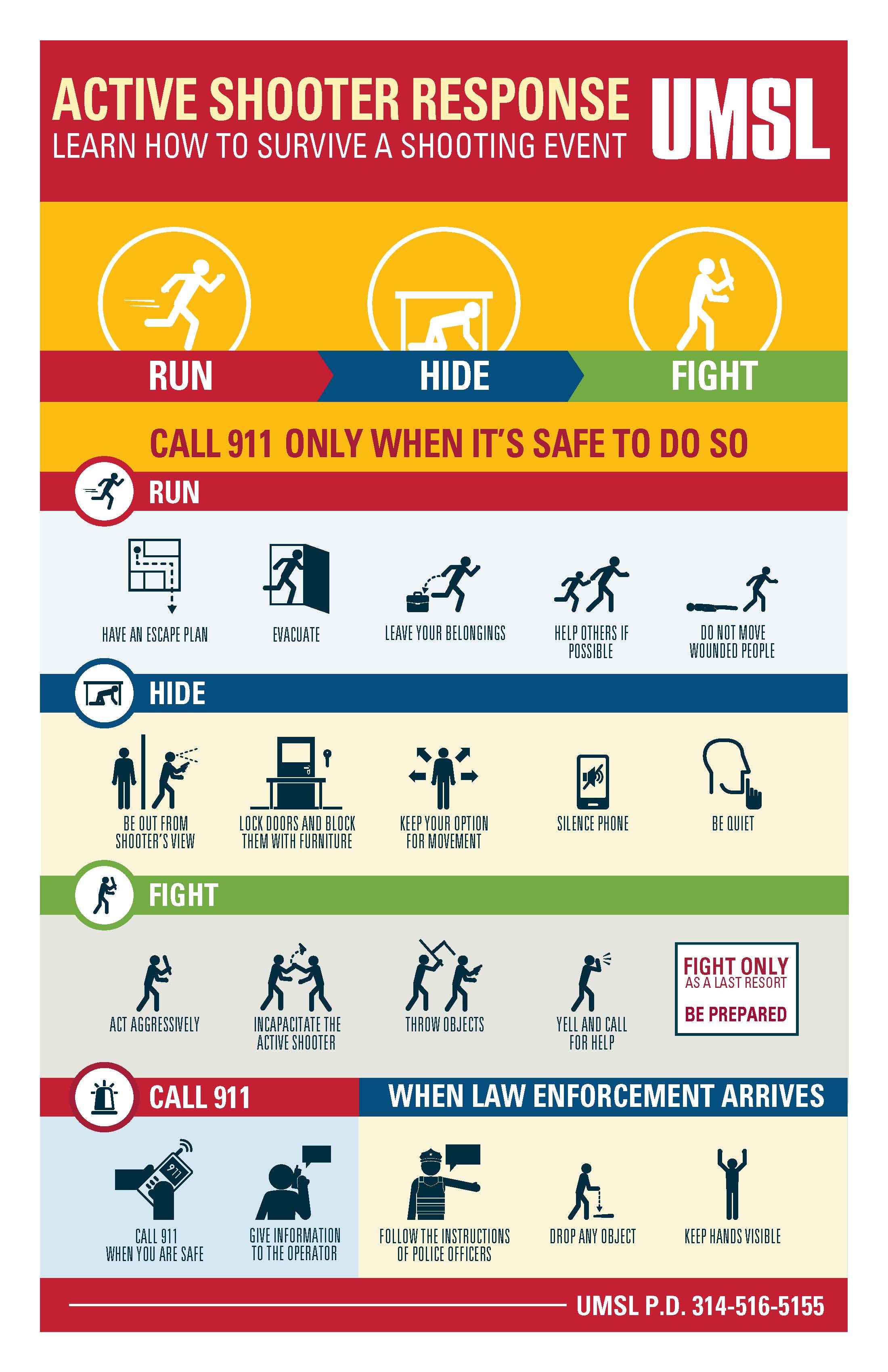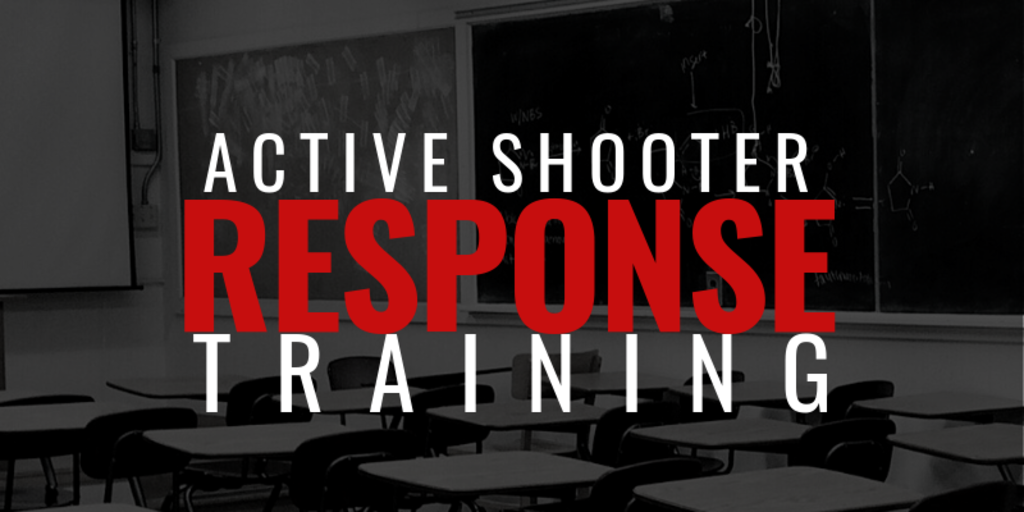The Significance of Active Shooter Training in High-Risk Atmospheres
The Significance of Active Shooter Training in High-Risk Atmospheres
Blog Article
Executing Active Shooter Training: Ideal Practices for Creating a Safe and Prepared Community Setting
As areas confront the upsetting fact of energetic shooter incidents, the application of thorough training programs becomes essential. A successful technique depends upon not just the growth of tailored curricula that address local risks but likewise the involvement of diverse stakeholders. By employing a variety of training methods, communities can guarantee that all members are outfitted with vital skills. The difficulty lies in maintaining an adaptive framework that evolves with arising hazards. What are the essential components that can change a common training program into a robust design for community resilience?

Comprehending the Need for Educating
In an age noted by increasing events of violence in public areas, recognizing the demand for energetic shooter training has actually never been much more essential. Comprehensive training initiatives can gear up participants with the understanding and skills to respond decisively.
Training fosters a sense of empowerment and readiness, making it possible for individuals to really feel more protected in their surroundings. The advantages of energetic shooter training expand past instant response; they consist of boosting communication protocols and boosting general safety procedures within organizations.
Key Elements of Effective Programs
Efficient active shooter training programs include several crucial parts that enhance readiness and response abilities. Extensive educational program development is necessary, guaranteeing that training web content is relevant, evidence-based, and customized to the specific requirements of the company or community. This consists of recognizing the dynamics of energetic shooter incidents and the emotional effect on people involved.
Second, practical training situations need to be employed to imitate possible circumstances, enabling individuals to exercise decision-making and feedback approaches in a controlled setting. These drills assist in muscular tissue memory and develop confidence amongst participants.
Third, a concentrate on interaction procedures is vital. Establishing clear lines of communication amongst police, emergency situation -responders, and individuals guarantees coordinated feedbacks during a case. Normal updates and refresher training courses help keep interaction paths clear and effective.
4th, recurring evaluation and responses devices should be integrated into the training program - active shooter training. Assessing the effectiveness of training through participant feedback and performance metrics enables continuous improvement
Lastly, fostering a society of safety and readiness within the neighborhood urges watchfulness and positive actions, making sure that individuals are not only skilled but also participated in keeping a secure setting.
Engaging Area Stakeholders

To efficiently involve these stakeholders, it is important to communicate the purposes and benefits of the training. Holding informational sessions can assist clarify the training's function, address concerns, and detail the roles each stakeholder might play. Furthermore, developing a stakeholder consultatory board can help with recurring dialogue, allowing for varied perspectives and insights to be incorporated into the training program.
Structure connections with neighborhood leaders and companies is additionally important. Their assistance can enhance outreach efforts, boost engagement, and ensure that training is tailored to the special demands of the area. Additionally, stakeholders can help in sharing details and resources, reinforcing the message of security and preparedness.
Inevitably, involving neighborhood stakeholders not only reinforces the training initiative but also cultivates a feeling of ownership amongst residents, resulting in a much more durable and educated neighborhood qualified of reacting successfully to prospective dangers.
Training Delivery Methods
Utilizing a selection of training distribution techniques is necessary to accommodate the diverse knowing site link styles and demands of individuals in active shooter training programs (active shooter training). Effective training can take numerous types, including lectures, navigate to this website hands-on simulations, on-line components, and interactive workshops. Each technique serves an unique objective and can improve the overall discovering experience

Online modules use flexibility and availability, enabling participants to discover at their very own pace. These can include videos, tests, and conversations to gauge understanding. Interactive workshops encourage group conversations and analytic, advertising teamwork and communication skills.
Incorporating a blended method that incorporates these techniques not just enriches the training experience but likewise makes certain that participants are better prepared to respond successfully in case of an energetic shooter scenario (active shooter training). By dealing with various discovering preferences, organizations can produce a much more educated and responsive neighborhood
Constant Examination and Enhancement
Routine analysis and improvement of energetic shooter training programs are crucial to maintaining their relevance and efficiency. As risks develop, so should the methods and methods utilized in training. Constant assessment guarantees that training material reflects the newest intelligence on energetic shooter cases, including lessons picked up from recent events and adjusting for arising fads.
To promote this process, companies ought to develop comments devices that include participant examinations, professional testimonials, and incident debriefs. Collecting data on participant efficiency throughout drills and exercises is crucial, as it highlights locations requiring renovation and informs future training sessions. Furthermore, involving with police and emergency situation -responders can give beneficial understandings right into the usefulness and applicability of training protocols.
Frequently scheduled testimonials of training materials and techniques must be mandated, fostering a setting of advancement and adaptability. Organizations has to likewise urge a culture of recurring discovering, where personnel really feel equipped to recommend changes based on their experiences. By devoting to continual analysis and improvement, organizations not only boost the efficiency of view it now their energetic shooter training programs however likewise reinforce their total dedication to safety and readiness within the community.
Verdict
In final thought, reliable implementation of energetic shooter training necessitates a detailed strategy that focuses on area involvement and realistic simulations. Inevitably, a commitment to recurring training and improvement cultivates a culture of watchfulness and readiness, making sure a safer atmosphere for all area participants.
Report this page